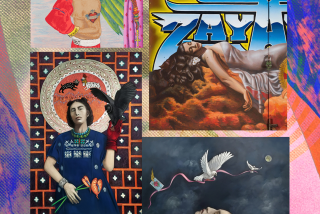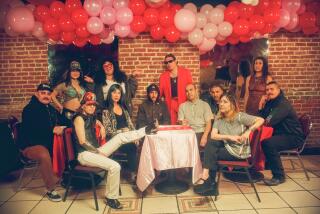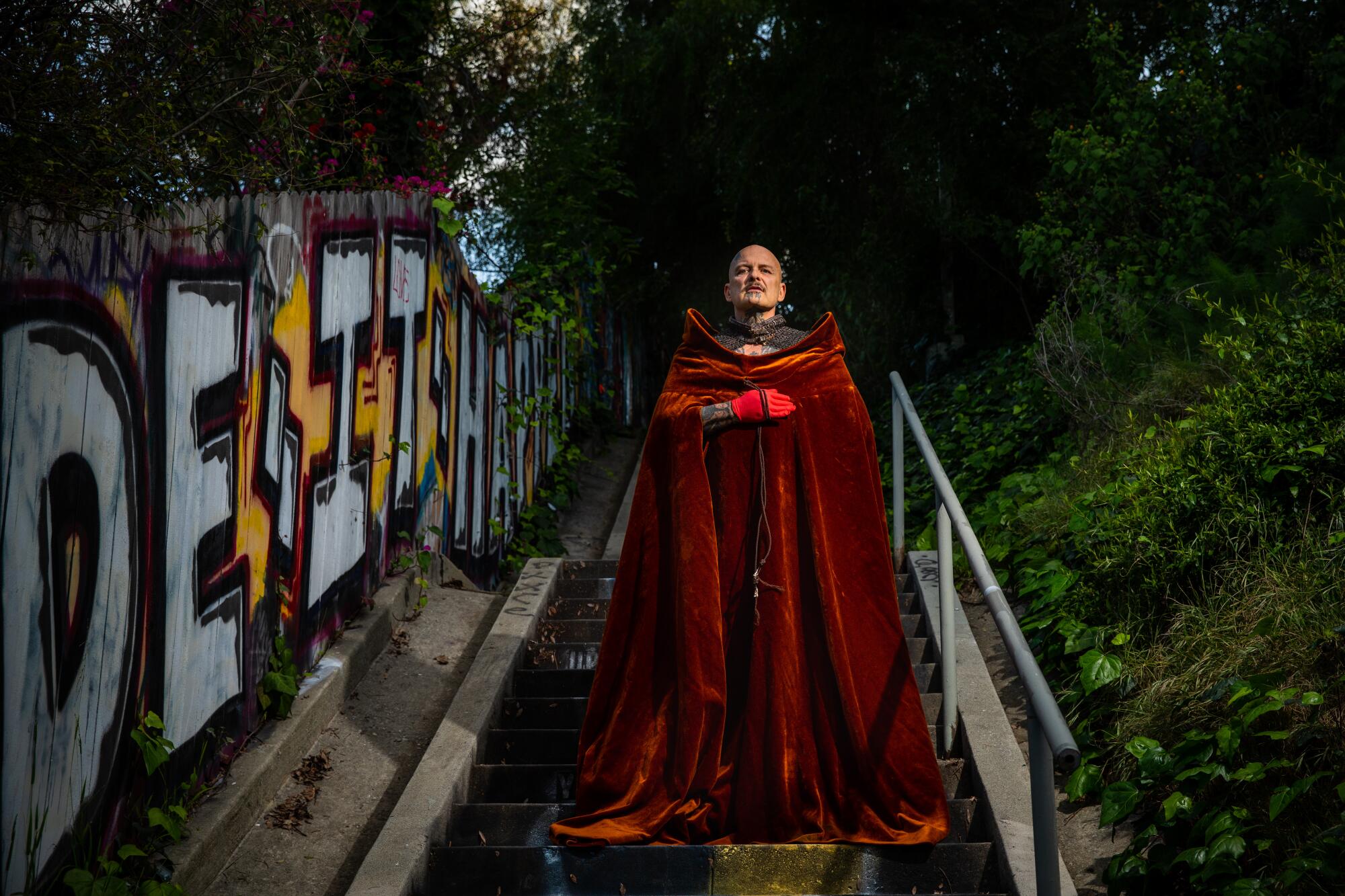
Artist Ron Athey stands on the steps of his Silver Lake apartment building during the second week of Californiaâs stay-at-home order to prevent the spread of COVID-19. He is decked out in a billowing velvet gown that once belonged to performance artist Leigh Bowery.
âI donât want to die in my pajamas,â Athey says with a laugh. âIâll be looping in eternity in a bad look.â
Previous pandemics â smallpox in the Americas, the plague in Europe â reshaped the ways artists worked. Itâs too soon to know the long-term effects of the current coronavirus on the art world, but itâs already having a major effect, closing public institutions and sending artists retreating into studios, some of them rather makeshift.
The Times checked in with five L.A. artists (from a distance) to record the ways in which they have continued to work: in homes and in garages, with fear and with purpose, not to mention a healthy dose of gallows humor.
Ron Athey: Channeling the biblical
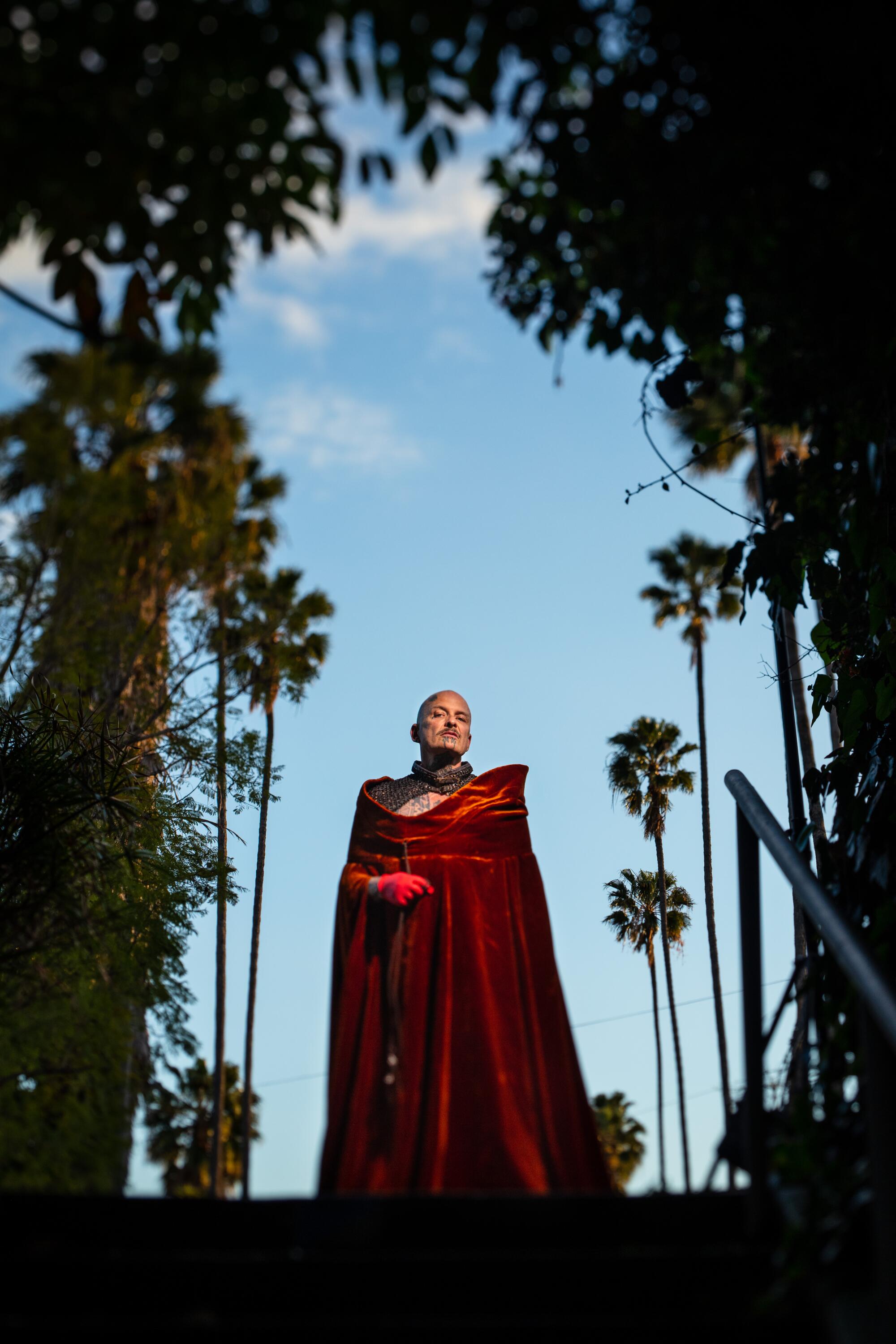
When the quarantine began, Ron Athey was already taking stock of his lifeâs work for a fall retrospective at Participant Inc. in New York. The show is scheduled to travel to the Institute of Contemporary Art, Los Angeles next spring â âif the world is open,â he says. The artistâs performances, which explore fetish, queerness and myth, landed on the national stage during another pandemic: the HIV/AIDS crisis. The work was never about the disease, but instead raised âphilosophical questions about the nature of healing,â he says â ideas that couldnât be more poignant at the present time.
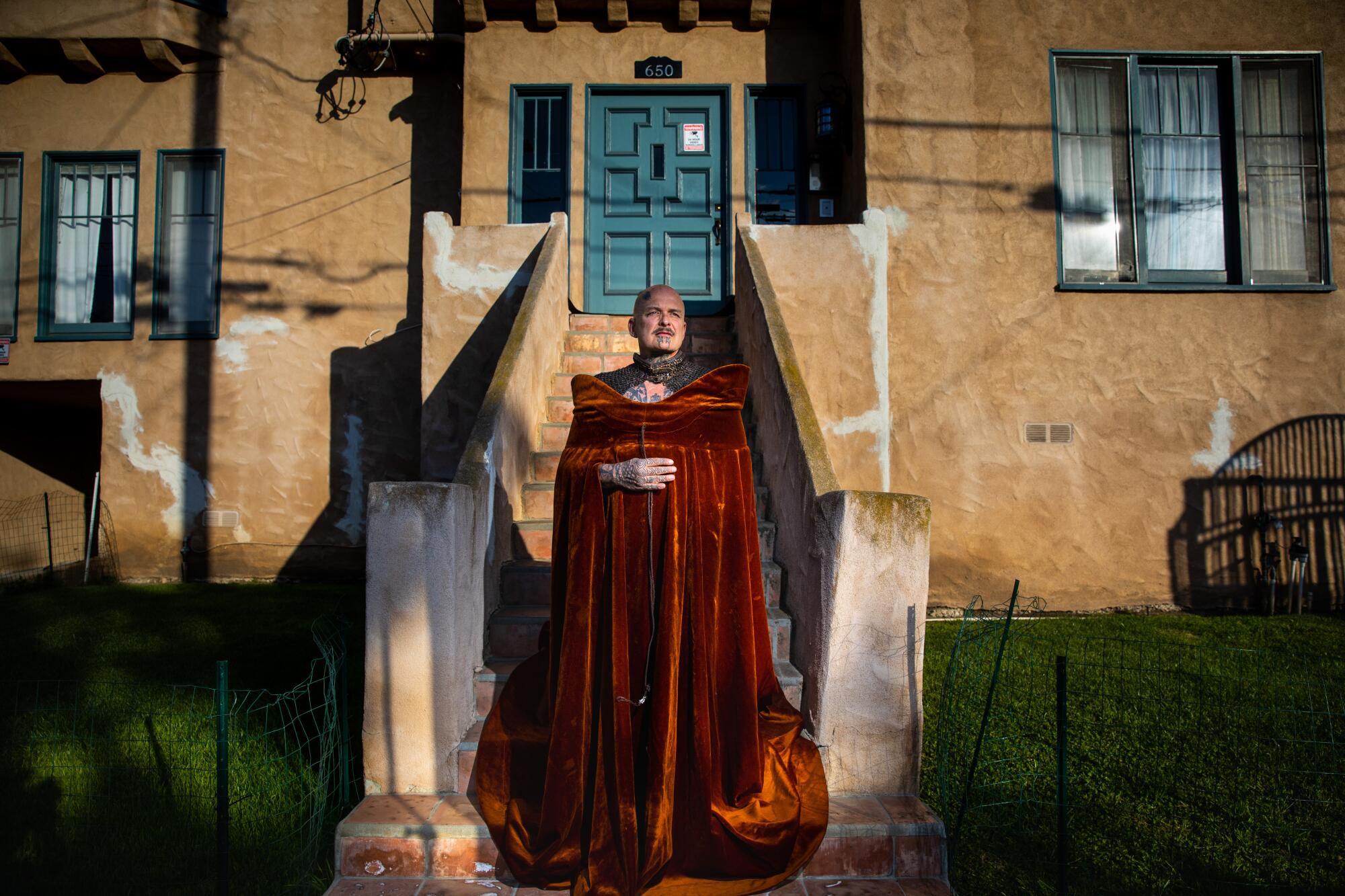
For the retrospective, Athey has been going through old performance costumes and mending them for display. The dour mood of the world inspired him to don the costumes and post buoyant selfies to Twitter. âMy dress obsessions come from the big Hollywood evangelists, like Aimee Semple McPherson,â he says. âThis parading around while healing or talking in tongues, performing in a big dress. Itâs channeling something formal, biblical.â
Tanya AguiĂąiga: Improvising a studio
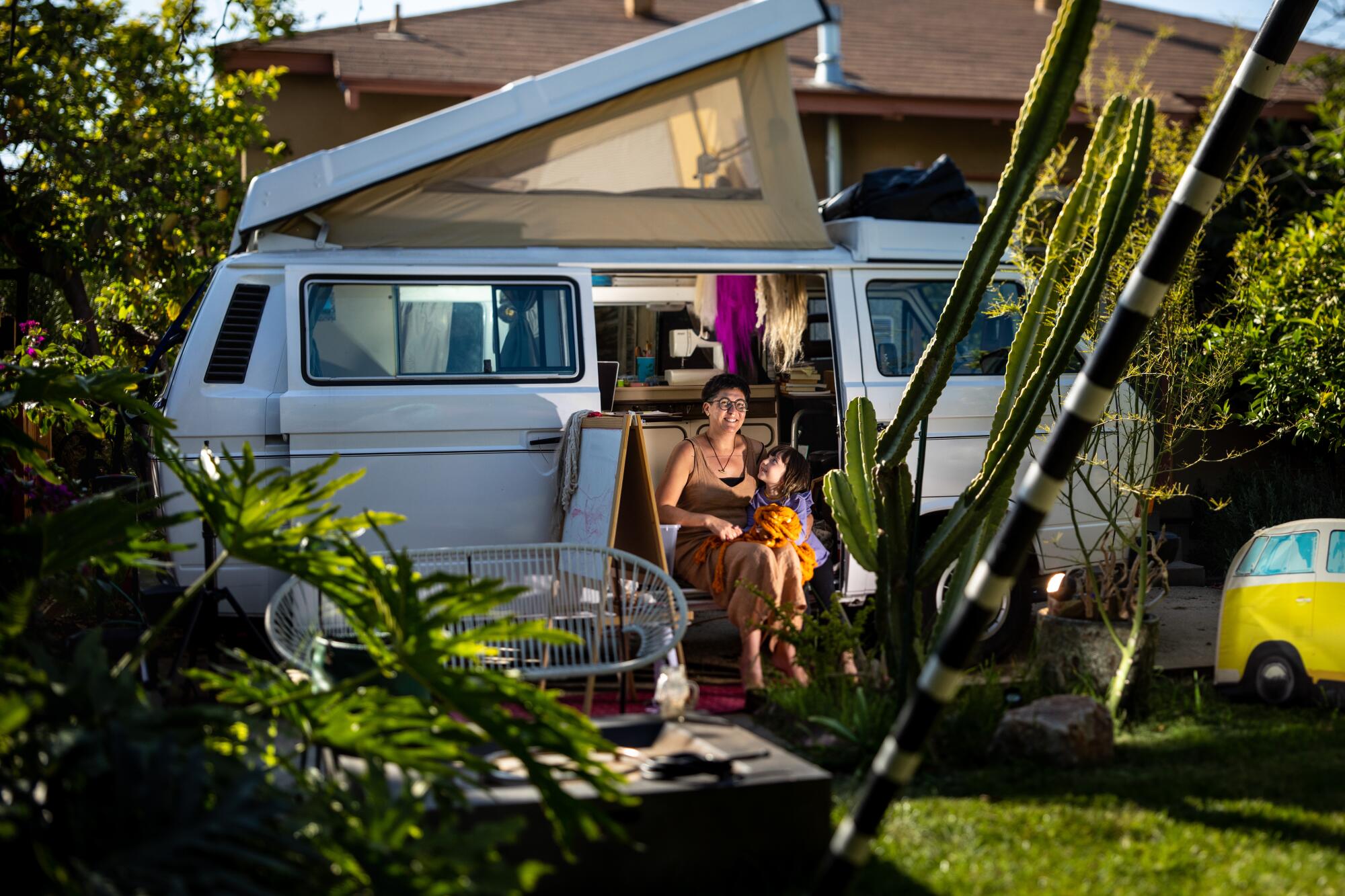
In February, fiber artist Tanya AguiĂąiga, who is known for her large-scale woven installations, opened a solo exhibition at Pasadenaâs Armory Center for the Arts. She could have hardly imagined that a month later it would be shuttered, trapped in a suspended animation like all of her other projects. AguiĂąiga has had to lay off two longtime studio assistants and is trying to home-school her daughter as she writes grant applications. âIâm trying to figure out what I can keep going as everything gets postponed or canceled,â she says.
But she has nonetheless found the time to make work â in an improvised studio inside a Volkswagen camper she has parked in her backyard. Of staying connected to her work, she says: âItâs therapeutic and meditative to continue.â
Monica Majoli: Moment of reflection
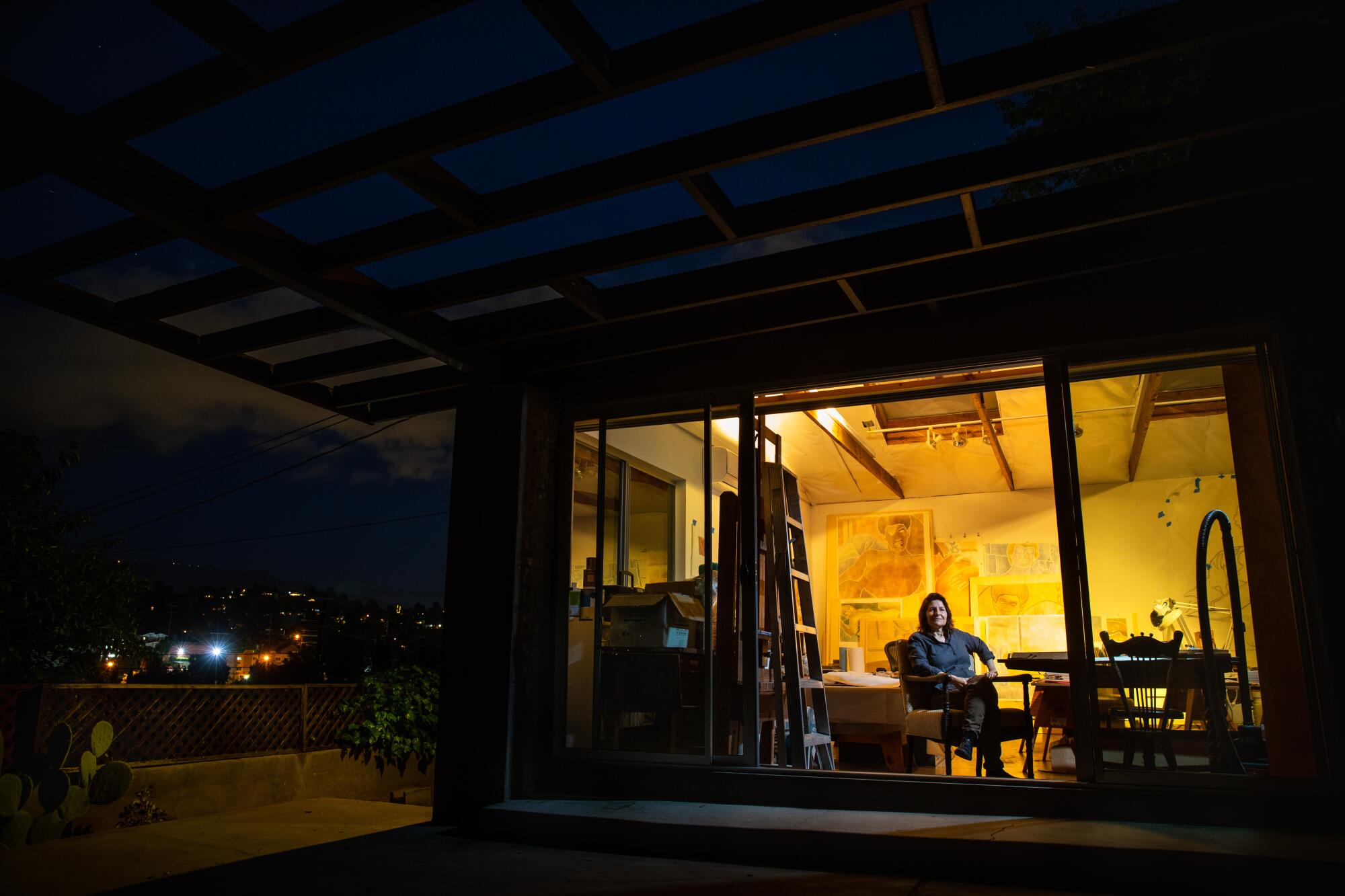
Painter Monica Majoliâs latest series captures the blissful ecstasies of living as an epidemic looms on the horizon. Titled âBlueboys,â her alluring white-line woodcuts are inspired by the 1970s gay porn magazine of the same name, expressions of ebullient male sexuality before HIV/AIDS was part of the social equation.
The painter was chosen to show works from this series at the Hammer Museumâs âMade in L.A.â biennial, still on the books for this summer, followed by an exhibition at L.A.âs Hannah Hoffman gallery next year. But she worries about the effects of isolation on Angelenos who already live in a state of perpetual separation. âIt is making people who are too busy stop and reflect,â she says. âIn a weird way, itâs a peaceful, contemplative time.â
Sandy Rodriguez: Experimenting in the studio
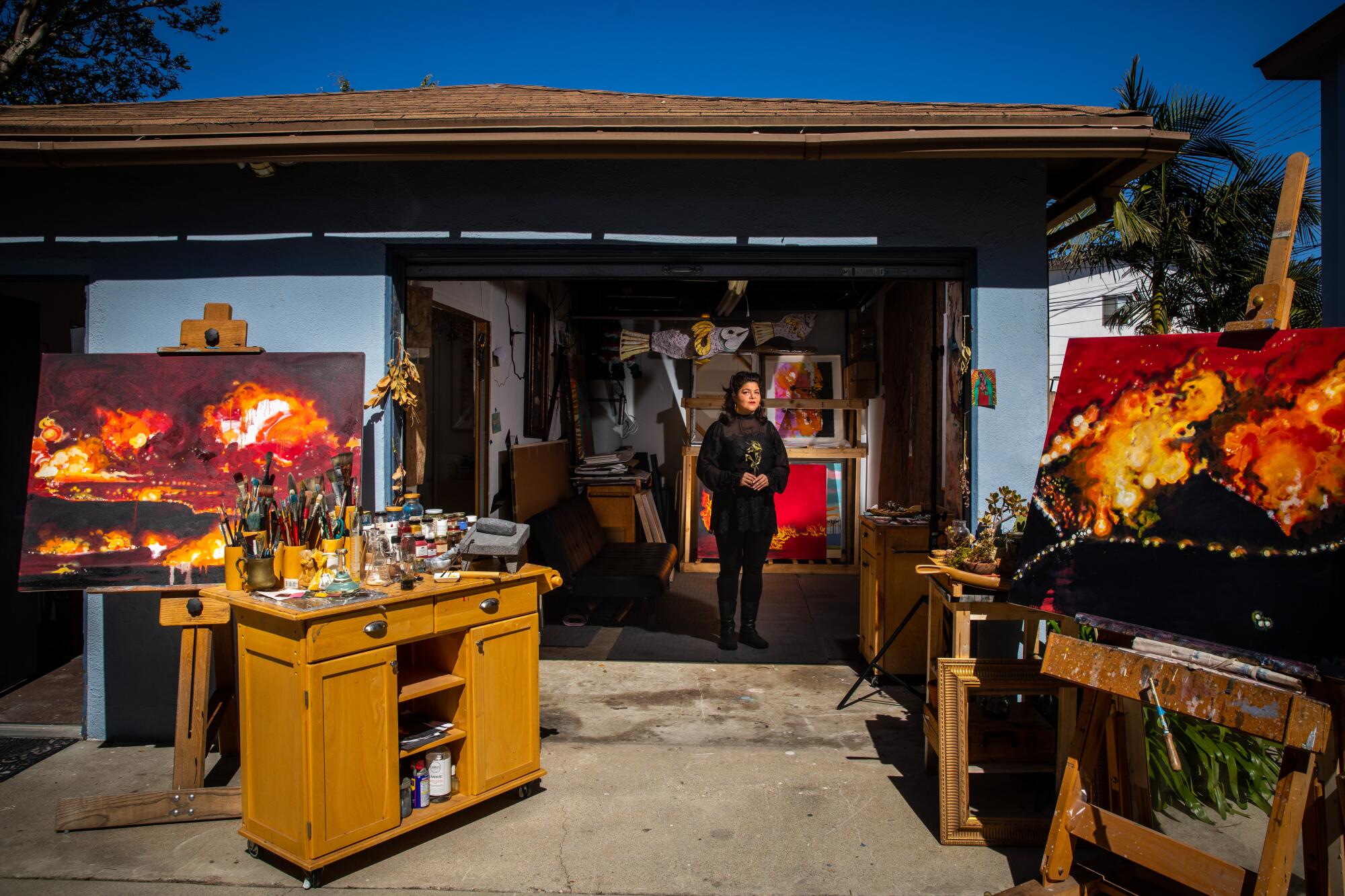
Pinned to the walls of Sandy Rodriguezâs garage studio are a pair of 8-foot sheets of bark paper that depict Old Verdugo, an oak that once served as a boundary marker during the era of the Mexican ranchos. With speaking and teaching gigs canceled, the painter, who is inspired by ancient indigenous painting techniques, is spending her time testing new materials (such as acorn inks) that sheâll use to tell the story of this life-giving tree.
The artist began the piece weeks ago for a summer show at Descanso Gardens, where Old Verdugo once stood. The fate of the show is up in the air, as is the exact nature of her painting. âThis started off in a joyful place, in this contemplative moment,â she says. â Iâm guessing it will evolve.â
Devon Tsuno: Inner worlds
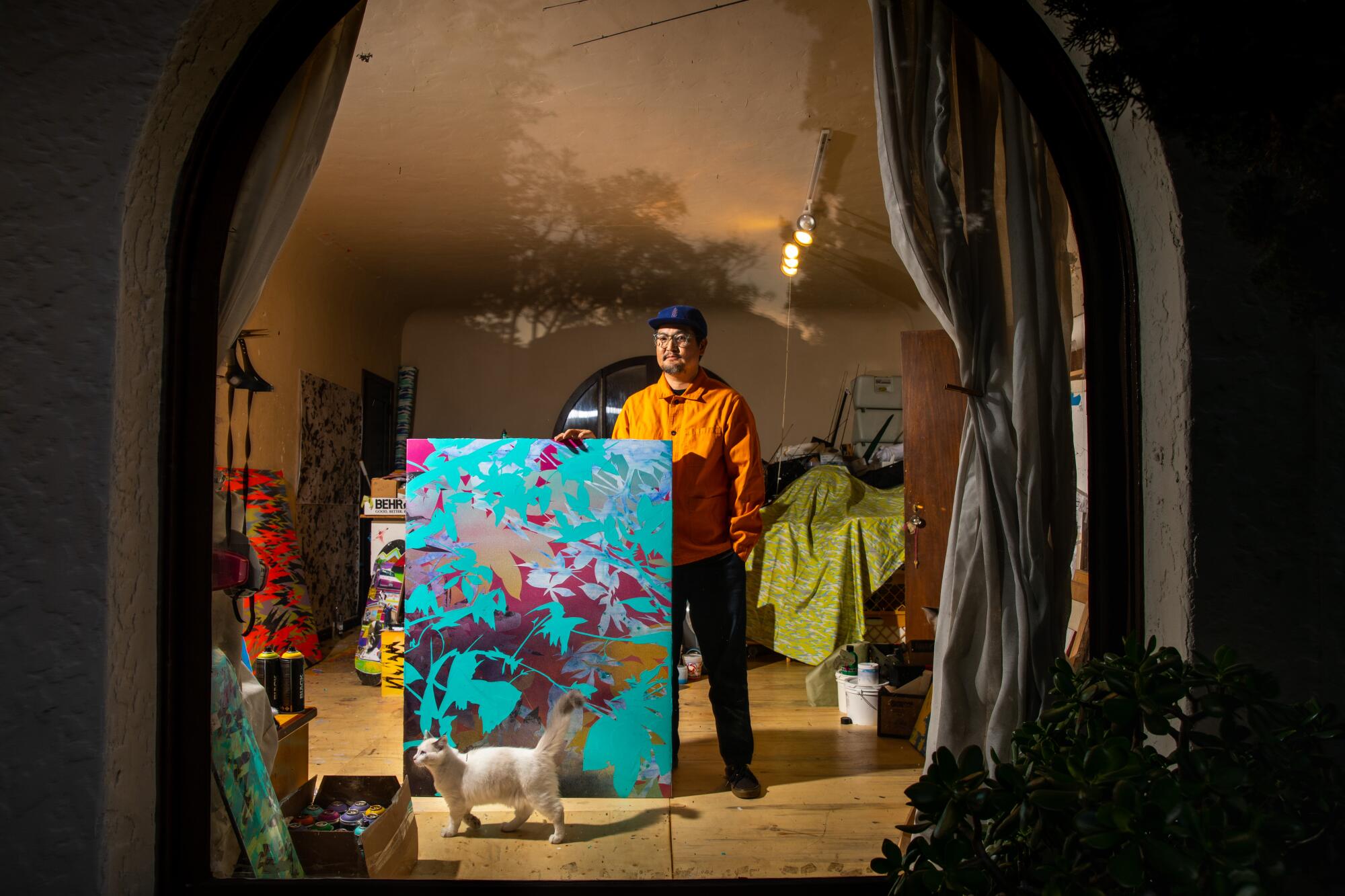
Painter Devon Tsunoâs solo show at Residency gallery in Inglewood was a first for the artist: explorations of landscapes associated with Japanese American internment during World War II, history that touches his own family, some of whom were held at the Topaz War Relocation Center in Utah.
Residency, like other galleries, has closed; all related programming, canceled. But Tsuno says he feels lucky. He has a steady job (as a professor at Cal State Dominguez Hills) and a home studio. âBut I miss my students, I miss my colleagues,â he says. âIâm thinking about what it means to be a painter isolated in that space â and how itâs different when you are forced to do it. Being out in the world, that affects the decisions I make in the studio.â
Culture in plague times: The Florentine Codex, an encyclopedia on Mesoamerican indigenous life, was created as Mexico was ravaged by smallpox
More to Read
The biggest entertainment stories
Get our big stories about Hollywood, film, television, music, arts, culture and more right in your inbox as soon as they publish.
You may occasionally receive promotional content from the Los Angeles Times.

